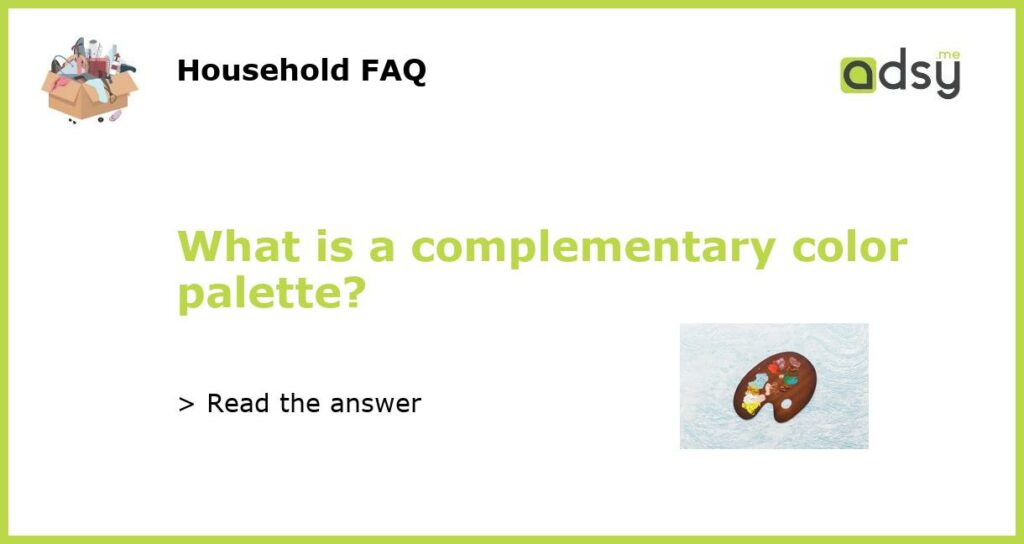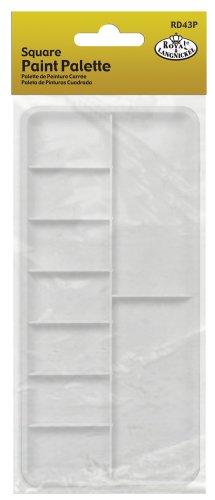Understanding Complementary Color Palette: A Guide to Harmonious Color Schemes
A complementary color palette is a concept used in design and art that involves selecting colors that are opposite to each other on the color wheel. These pairs of colors create a strong contrast and can be used to create a harmonious and visually appealing color scheme.
The Basics of Complementary Colors
The color wheel is a visual representation of the spectrum of colors. It consists of primary, secondary, and tertiary colors. Complementary colors are positioned directly opposite each other on the color wheel. The primary complementary colors are red and green, blue and orange, and yellow and purple. These pairs provide the greatest contrast and vibrancy when used together.
Using complementary colors in a design brings balance and harmony by utilizing opposites. The contrast of hues creates visual interest and can draw attention to specific areas or elements of a design. Complementary colors can be used to evoke certain emotions or moods, as well as establish a strong visual impact.
Creating a Complementary Color Palette
There are several methods to create a complementary color palette:
- Color wheel: Start with a base color and select its direct complement. For example, if the base color is blue, its complementary color would be orange. Use variations of the chosen complementary colors to create a harmonious palette.
- Split complementary: Instead of using the direct complement, select the colors on either side. For example, if the base color is blue, the split complementary colors could be orange and yellow. This creates a more subtle contrast while still maintaining harmony.
- Tetradic: Choose two complementary pairs on the color wheel to create a tetradic palette. For example, red and green with blue and orange. This combination provides a wide range of colors to work with, while still maintaining a sense of balance.
- Analogous: Select colors that are adjacent to each other on the color wheel. While not true complementary colors, using analogous colors can create a harmonious and cohesive color palette.
- Neutralizing: Pairing a vivid color with a neutral color can create a complementary color palette. For example, pairing a bright red with a muted gray can create a visually appealing contrast.
Using Complementary Colors in Design
When using a complementary color palette in design, there are a few important considerations to keep in mind:
- Balance: Use complementary colors in a balanced way to ensure no one color dominates the design. This can be achieved by using the colors in equal proportions or by using one color as the dominant hue and the other as an accent.
- Contrast: The high contrast of complementary colors can be used to highlight specific elements or areas in a design. This can be particularly effective in creating focal points or drawing attention to important information.
- Hierarchy: The use of complementary colors can help establish a visual hierarchy within a design. By assigning different levels of prominence to each color, you can guide the viewer’s eye and create a sense of order and organization.
- Emotion and mood: Complementary colors have the ability to evoke specific emotions or moods. For example, red and green are often associated with Christmas and can create a festive and joyful atmosphere. Understanding the psychological effects of colors can help you choose the right complementary palette for your intended message or theme.
Examples of Complementary Color Palettes
Here are a few examples of complementary color palettes:
- Blue and orange: This combination creates a strong contrast and is often used in sports branding or high-energy designs.
- Red and green: This classic complementary pairing is commonly associated with Christmas and can create a festive and traditional atmosphere.
- Purple and yellow: These vibrant colors create a bold and playful palette and can be used to convey a sense of creativity and imagination.
- Teal and coral: This modern pairing provides a fresh and dynamic color scheme that can work well in a variety of design styles.
In conclusion, a complementary color palette is a powerful tool in design and art. By understanding the basics of complementary colors and utilizing them effectively, you can create visually appealing and harmonious color schemes that elevate your design work.






